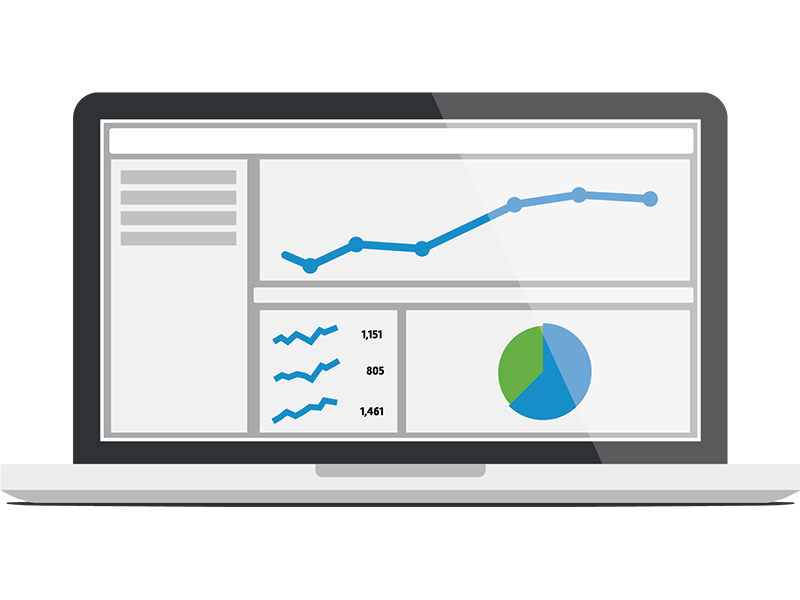Like any other marketing campaign, your website can be tracked, tested, analyzed, and optimized. In fact, maybe more than any other marketing campaign, it should be. Your website is often the final destination of all paths created by your marketing efforts. Almost all of your prospects will take at least a moment to check out your website. By examining the data produced by your website analytics software, you can uncover what’s working and what’s not.
By the way, if you do not have analytics software installed and strategically set up on your website, please reach out to us. It’s a quick but invaluable fix.
Let’s take a look at five website metrics that you need to be tracking:
1. Unique Visitors
Although returning visitors are important to your business, the number of unique individuals that come to your website gives you a much clearer picture of the actual size of the audience your marketing efforts are bringing it.
Knowing this can help you plan how best to allocate your marketing time, energy, and resources. It will guide you in terms of which marketing efforts are worth ramping up, and which are worth either nixing or tweaking.
2. Bounce Rate
Bounce rate refers to the number of folks who came to your website and immediately said, “Let’s bounce.” These are the people who came, saw, and without even visiting a single other page, decided your website was not right for them.
Knowing your bounce rate can tell you whether or not you’re attracting the right traffic in the first place, and whether or not your prospects are compelled enough by what you have to offer to actually stick around. Your bounce rate should inform your website’s design, user interface, copy, and calls to action.
3. Traffic Sources
Knowing where your website visitors are coming from is crucial. It helps to show where your marketing efforts have shown success and where you need to invest more energy.
Is your traffic coming through organic search engine searches, social media networks, paid online advertising campaigns you’re running, emails either you or someone else has sent them, or are they going directly to your website by typing your URL into their browser? Can any of these areas be improved in order to bring in more qualified leads? Does the traffic from each source appropriately match the marketing effort you’re putting forth at each of these sources?
4. Conversion Rates
Before you can track how well each page of your website is converting, you first must define what a conversion actually is. This is different for each website. Do you want someone to submit a message on your contact form, book an appointment through your online scheduler, buy a product on your eCommerce site, download a white paper, subscribe to your company blog? What is the #1 goal for your website?
Once you’ve defined a conversion and set up your analytics software to track when a goal has been reached, you will have a clear picture of which page elements are working and which are not. You can then apply the strengths of your highest converting pages to your weakest ones.
5. Keywords
By keeping track of how well your target keywords are performing and also monitoring those keywords you’re ranking for that you never even planned to, you can focus your outreach efforts and continuously optimize your website to consistently bring in an increasing stream of targeted traffic.
If you do not have a structured and tracked search engine optimization (SEO) strategy in place, it’s never too late to start today. Do you need help building or improving your SEO strategy? We just love the science behind the process and we’re always here to help you build the value of your website.
